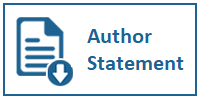Mission Possible: Creating a Spectacle with a Repetition of the Same Formula
DOI:
https://doi.org/10.31937/ultimart.v17i1.3525Abstract
A motion picture is one of the most popular spectacles people enjoy for various reasons, among others for entertainment. A film titled "Mission: Impossible” is one of the all-time most watched movies globally, since the first series was created in 1996. In the year 2023 it has come to the 7th series, and what has been released was only the first part, leaving its fans anxiously waiting for the end of the story. Many people would say there is nothing new in each of the series; the script writer applies the same ‘formula” to attract audience, however the series never fail to generate a lot of revenue, with the last rendition already be very popular and recorded as one of the box-office only within the first two days of its showing. In the era where spectacles are the pinnacle of day-to-day life for almost everyone, this research is going to investigate audience reception of the film "Mission: Impossible -Dead Reckoning Part One” in terms of the components of a spectacle, applying the concept of The Society of Spectacle by Debord (1967) which stated that a spectacle is built by utilizing "The Star, the Agent of Spectacle, False Choice / Pseudo needs and Détournement. The research focuses on the détournement by analyzing audience comments posted on a social media platform, investigating the reasons they love and hate the film, and the result will reveal how (un)successful the detournements are applied.
Keywords: mission; impossible; spectacles; the society of spectacles; détournement; reception studies
Downloads
Published
How to Cite
Issue
Section
License
Authors retain copyright and grant the journal right of first publication with the work simultaneously licensed under a Creative Commons Attribution-ShareAlike International License (CC-BY-SA 4.0) that allows others to share the work with an acknowledgement of the work's authorship and initial publication in this journal.
Authors are able to enter into separate, additional contractual arrangements for the non-exclusive distribution of the journal's published version of the work (e.g., post it to an institutional repository or publish it in a book), with an acknowledgement of its initial publication in this journal.
Copyright without Restrictions
The journal permits the author(s) to hold the copyright without restrictions and will hold distributing rights without limitations.
The submitted papers are assumed to contain no proprietary material unprotected by patent or patent application; responsibility for technical content and for protection of proprietary material rests solely with the author(s) and their organizations and is not the responsibility of the Ultimart: Jurnal Komunikasi Visual or its Editorial Staff. The main (first/corresponding) author is responsible for ensuring that the article has been seen and approved by all the other authors. It is the responsibility of the author to obtain all necessary copyright release permissions for the use of any copyrighted materials in the manuscript prior to the submission.















